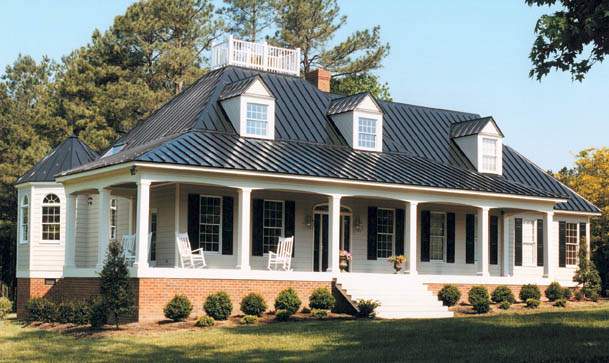Homes and buildings with metal roofs have two primary problems – heat loss and condensation. Because metals are excellent heat conductors, they transmit heat both into and out of the building depending upon where the temperature is higher. When it is hot outside in summer, the building becomes intolerably hot. And during winter, the heat seeps out from the house needing more heating.
When temperatures swing, water vapor in the air condenses around the metal panels causing another problem. The constant damp leads to fungal growth and the woodwork may rot sooner. Both these problems are significant for any homeowner with a metal roof.
Metal roof insulation can help get rid of these problems. There are different techniques in use to insulate homes with metal roofs. We will discuss three of them in this report.
Fiberglass Batts for Metal Roof Insulation
Fiberglass batts are useful as barriers between metal roofing and the building interior. When batts are placed side by side on top of the roofing rafters, they will permit some degree of air flow between them. Insulation batts aren’t really closed systems like other insulation, including spray foam. This means that some air flow happens even with well installed batts insulation.
Batts must be installed with a vapor barrier. This means that you can’t directly place the batts for insulation under the metal roof. If you do, then water condensing on the metal roof will seep into the batts and destroy it. Water will also interfere with the insulating capacity of the batts, and therefore will require replacement frequently.
If you allow a gap of around six inches between the roof and insulating batts, air will be able to circulate in the space and prevent condensation. But because of these requirements, the fiberglass batts based insulation is neither very effective as a heat seal, nor does it keep condensation from happening at all.
Polyurethane Foam Insulation for Metal Roofs
Another approach to insulate metal roofs is to spray polyurethane foam on the undersurface of the sheets. By acting as a physical barrier, the spray foam gets into all crevices, sealing the gaps effectively and preventing heat loss. In addition, you can also apply spray foam insulation to the outer surface of metal roofs to further enhance the insulating effect.
How thick a layer you’ll require will depend upon the U rating of the foam. The thicker the insulation, the better will be its heat retaining power. An inch of foam under metal roofs will effectively prevent water condensation as well. Batts will need to be twice as thick to achieve similar insulating power as foam insulation, making it a cheaper option as well.
Radiant Barrier Metal Roof Insulation
Reflective layers serve as excellent insulation for metal roofs. Your home will be more comfortable and consume lesser energy for heating and cooling needs when radiant barrier insulation is installed.
This type of roof insulation can be done over rafters, roof decking or even on existing shingles roofs. Felt paper and waterproofing layers deal with water condensation. Foil for radiant barrier insulation is placed on the roof deck and nailed in place to keep them secure.
These 3 methods of metal roof insulation are good options for homeowners. Benefits and drawbacks must be carefully considered before installing any one. Experienced roofing insulation experts will be able to guide you in making this decision based on local variations and unique requirements.
For more information about roofing insulation and metal roofs, you can check out our reports at our Home Improvement Guide at http://www.Agua2009.info
